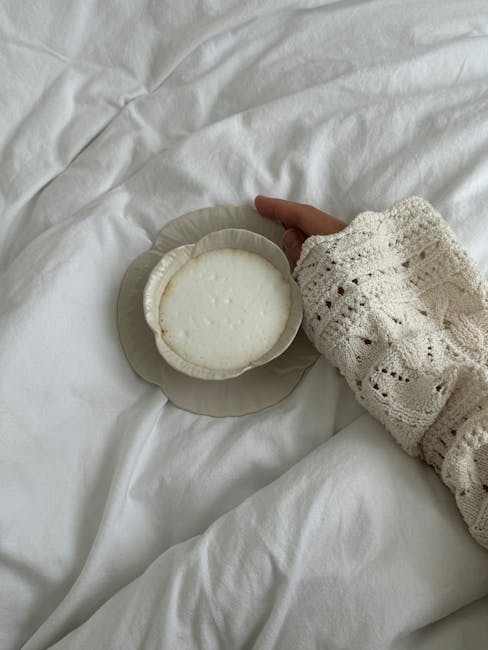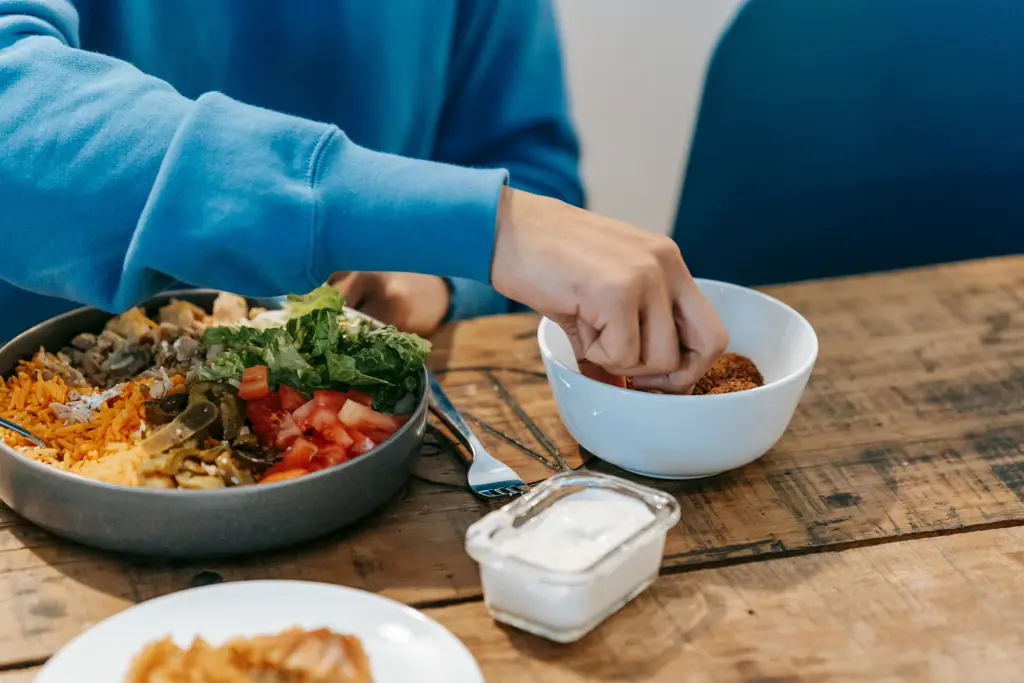Chicken shawarma, a culinary delight enjoyed globally, boasts a rich history deeply intertwined with Middle Eastern culture. Its origins trace back to the Ottoman Empire, with some historians suggesting its evolution from the Turkish doner kebab, a vertical spit-roasted meat dish. The precise timeline remains debated, but the technique of slowly roasting marinated meat on a vertical rotisserie has been practiced in the region for centuries. While the exact origins are shrouded in some mystery, what is clear is the dish’s subsequent widespread adoption and adaptation across various Middle Eastern and Mediterranean countries, each adding its unique regional twist to the recipe.
The popularity of shawarma is undeniable. Globally, the shawarma industry is a multi-billion dollar enterprise, with countless restaurants and street food vendors serving variations of this iconic dish. Its appeal stems partly from its versatility – the marinated meat can be chicken, lamb, beef, or even turkey – and the abundance of flavorful accompaniments such as hummus, tahini, toum (garlic sauce), and various pickles. Furthermore, the cooking method itself contributes significantly to the shawarma’s unique flavor profile. The slow roasting process allows the meat to become incredibly tender and juicy, while the outer layers caramelize beautifully, creating a delicious textural contrast.
Beyond its deliciousness, shawarma holds significant cultural importance. It’s a common sight at family gatherings, celebrations, and everyday meals across many cultures. In many Middle Eastern countries, shawarma stands as a symbol of culinary heritage and a testament to the region’s rich gastronomic tradition. It’s a dish that transcends socioeconomic boundaries, enjoyed by people from all walks of life. The preparation and sharing of shawarma often becomes a communal experience, strengthening social bonds and fostering a sense of belonging. This recipe aims to guide you through creating a truly authentic and delicious chicken shawarma experience, allowing you to appreciate not only its taste but also its rich cultural background.
Ingredients and Measurements
Creating the perfect Chicken Shawarma hinges on using high-quality ingredients and precise measurements. Here’s a detailed breakdown of what you’ll need for approximately 4 servings:
Chicken: 1.5 lbs boneless, skinless chicken thighs, cut into 1-inch cubes. Using thighs is crucial; they remain juicy and flavorful even after marinating and cooking. Breast meat tends to dry out. Ensure your chicken is fresh and of good quality for optimal taste.
Marinade: The marinade is the heart of the shawarma. Here’s the recipe:
- 1/2 cup plain yogurt (full-fat recommended for richness): Greek yogurt works best for its creamy texture and tang.
- 1/4 cup lemon juice (freshly squeezed is best): This adds brightness and acidity, balancing the richness of the yogurt.
- 2 tablespoons olive oil: Provides moisture and a subtle fruity flavor.
- 2 tablespoons tahini: Adds a nutty depth and creamy texture to the marinade.
- 1 tablespoon paprika (smoked paprika preferred): Provides a smoky, earthy flavor, characteristic of shawarma.
- 1 tablespoon ground cumin: Adds warmth and earthiness.
- 1 teaspoon garlic powder: Enhances the savory notes.
- 1 teaspoon onion powder: Adds subtle sweetness and depth.
- 1 teaspoon ground coriander: Provides a slightly citrusy and warm flavor.
- 1/2 teaspoon cayenne pepper (or more, to taste): Adds a touch of heat. Adjust to your spice preference.
- 1/2 teaspoon salt: Enhances the flavors.
- 1/4 teaspoon black pepper: Adds a touch of spice and complexity.
Other Ingredients:
- 2 large onions, thinly sliced: These will be added to the shawarma for extra flavor and texture.
- 2 bell peppers (any color), thinly sliced: Add sweetness and color.
- 2 tablespoons vegetable oil: For cooking the shawarma.
- Pita bread, hummus, and your favorite toppings (such as tahini sauce, chopped tomatoes, pickles, etc.): For serving.
Important Note: Always measure your ingredients accurately. Slight variations can significantly impact the final flavor profile. Allow the chicken to marinate for at least 4 hours, or preferably overnight in the refrigerator for maximum flavor penetration.
Marinade Preparation
The marinade is the heart and soul of a great chicken shawarma. A well-balanced marinade will tenderize the chicken, infuse it with incredible flavor, and create a beautiful, juicy final product. This recipe yields enough marinade for approximately 2 lbs of boneless, skinless chicken thighs, which are ideal for shawarma due to their higher fat content and resistance to drying out.
Ingredients:
- 1 cup plain yogurt (full-fat recommended for richness)
- 1/4 cup lemon juice (freshly squeezed is best)
- 1/4 cup olive oil
- 2 tablespoons paprika (smoked paprika adds a deeper flavor)
- 1 tablespoon ground cumin
- 1 tablespoon garlic powder
- 1 tablespoon onion powder
- 1 teaspoon ground coriander
- 1 teaspoon turmeric
- 1 teaspoon cayenne pepper (or more, to taste – adjust for desired spice level)
- 1 teaspoon salt
- 1/2 teaspoon black pepper
- 1 tablespoon dried oregano
Instructions:
In a large bowl, whisk together the yogurt, lemon juice, and olive oil until well combined. Ensure the yogurt is at room temperature for optimal blending. This helps create a smoother, more emulsified marinade.
Next, add all the remaining spices: paprika, cumin, garlic powder, onion powder, coriander, turmeric, cayenne pepper, salt, pepper, and oregano. Thoroughly whisk the spices into the yogurt mixture to prevent clumping and ensure even distribution of flavor throughout the marinade.
Taste the marinade and adjust the seasoning as needed. You might want to add more lemon juice for extra acidity, more cayenne pepper for heat, or more salt to enhance the overall flavor profile. Remember, the marinade should be flavorful and well-balanced.
Once you’re satisfied with the flavor, add the chicken thighs to the bowl. Ensure the chicken is completely coated in the marinade. Use your hands or tongs to gently massage the marinade into the chicken, ensuring it penetrates the meat thoroughly. Cover the bowl tightly with plastic wrap and refrigerate for at least 4 hours, or preferably overnight. The longer the chicken marinates, the more tender and flavorful it will become. Up to 24 hours is ideal.
Professional Tip: For an even more intense flavor, consider adding a few finely chopped cloves of fresh garlic and a small finely chopped onion directly to the marinade. This will add a fresh, vibrant element to the shawarma.
Chicken Marinating Process
Marinating your chicken is crucial for achieving tender, flavorful shawarma. A long marination time allows the spices and acids to penetrate the meat, resulting in a juicy and intensely aromatic final product. We recommend marinating at least 4 hours, but ideally, overnight for the best results.
For this recipe, we’ll use 2 lbs (approximately 900g) of boneless, skinless chicken thighs, cut into 1-inch cubes. This cut offers a great balance of tenderness and ability to hold its shape during cooking. Avoid using chicken breasts, as they tend to dry out easily during the shawarma process.
In a large bowl, combine the chicken with the following marinade ingredients: 1/2 cup plain yogurt (full-fat for richer flavor), 1/4 cup lemon juice (freshly squeezed is best!), 2 tablespoons olive oil, 2 tablespoons tomato paste, 1 tablespoon paprika (sweet or smoked, depending on your preference), 1 tablespoon ground cumin, 1 teaspoon garlic powder, 1 teaspoon onion powder, 1 teaspoon dried oregano, 1/2 teaspoon ground coriander, 1/2 teaspoon turmeric, 1/4 teaspoon cayenne pepper (optional, for a touch of heat), 1 teaspoon salt, and 1/2 teaspoon black pepper.
Thoroughly mix the chicken and marinade, ensuring all the pieces are evenly coated. Use your hands to gently massage the marinade into the chicken, helping it penetrate deeper. Once well combined, cover the bowl tightly with plastic wrap and refrigerate.
The longer you marinate, the better the flavor. While 4 hours is a minimum, overnight is preferred. The acidic components of the marinade (lemon juice and yogurt) will tenderize the chicken, while the spices infuse it with depth and complexity. If marinating for longer than 24 hours, monitor the marinade and ensure it is still fresh. Discard and replace if it shows signs of spoilage.
Before cooking, remove the chicken from the refrigerator about 30 minutes prior to allow it to come to room temperature. This ensures even cooking. Do not rinse the chicken before cooking; this washes away the flavorful marinade.
Important Note: Always practice safe food handling techniques. Ensure your chicken is stored at a safe temperature and that all utensils and surfaces are properly sanitized.
Vegetable Preparation
The vegetables in your chicken shawarma are just as important as the chicken itself! Proper preparation ensures they’re tender-crisp and flavorful, complementing the richness of the meat. We’ll be using a vibrant mix of onions, tomatoes, and peppers for this recipe.
Start with one large red onion (approximately 200g). Peel and thinly slice it. The thinner the slices, the better they’ll caramelize and soften during the cooking process. A mandoline slicer can be incredibly helpful here for even, consistent slices. If you don’t have one, a sharp knife and steady hand will do the trick. Avoid overly thick slices, as they will remain crunchy and undercooked.
Next, we’ll tackle the tomatoes. You’ll need two large ripe tomatoes (approximately 400g). Core them and then dice them into roughly 1/2 inch cubes. Don’t over-dice them; you want to retain some texture. If you prefer, you can use cherry or grape tomatoes, halved or quartered, for a slightly different aesthetic.
For peppers, use one large green bell pepper and one large red bell pepper (approximately 300g total). Remove the stems, seeds, and membranes. Then, slice them into thin strips, about 1/4 inch wide. Similar to the onions, consistent slicing is key for even cooking. Feel free to substitute with other pepper varieties, such as yellow or orange bell peppers, for a more colorful presentation.
Once all your vegetables are prepped, it’s a good idea to gently toss them together in a large bowl. This helps to evenly distribute any seasoning you might add later. Avoid over-mixing, as this can bruise the tomatoes and cause them to release excess liquid.
Professional Tip: To enhance the flavor of your vegetables, consider lightly seasoning them with salt, black pepper, and a pinch of paprika before adding them to the shawarma. This adds depth and complexity to the overall dish. You can also add a squeeze of lemon juice for extra brightness.
Remember, preparing your vegetables ahead of time will streamline the cooking process and allow you to focus on the chicken. Properly prepped vegetables will elevate your chicken shawarma from good to exceptional!
Cooking the Chicken (Grilling/Roasting/Pan-frying options)
Once your chicken is marinated (following the instructions in the previous section), you’re ready to cook it. We’ll explore three popular methods: grilling, roasting, and pan-frying. The best method depends on your equipment and preference, but all will result in delicious shawarma-style chicken.
Grilling: This method delivers a beautiful char and smoky flavor. Preheat your grill to medium-high heat (around 375-400°F). Oil the grates well to prevent sticking. Place the marinated chicken pieces on the grill, ensuring they aren’t overcrowded. Grill for approximately 6-8 minutes per side, or until the internal temperature reaches 165°F (74°C). Use tongs to gently turn the chicken to avoid tearing. For even cooking, you might need to adjust the heat or move the chicken to less intense areas of the grill.
Roasting: Roasting is a great option for larger quantities of chicken. Preheat your oven to 400°F (200°C). Spread the marinated chicken in a single layer on a large baking sheet. Ensure the chicken isn’t piled on top of each other to allow for even browning and cooking. Roast for 30-40 minutes, or until the internal temperature reaches 165°F (74°C). For extra crispiness, you can broil the chicken for the last 2-3 minutes, but watch closely to prevent burning.
Pan-frying: This is a quicker method, ideal for smaller portions. Heat 2 tablespoons of vegetable oil in a large skillet over medium-high heat. Do not overcrowd the pan; work in batches if necessary. Add the marinated chicken pieces and cook for 5-7 minutes per side, or until golden brown and cooked through. Reduce heat if the chicken is browning too quickly. For extra flavor, add a tablespoon of your marinade to the pan during the last few minutes of cooking.
Regardless of the method you choose: Always use a meat thermometer to ensure the chicken reaches a safe internal temperature of 165°F (74°C). This is crucial for food safety. Once cooked, let the chicken rest for 5-10 minutes before slicing. This allows the juices to redistribute, resulting in more tender and flavorful chicken. Resting is a vital step often overlooked, but it makes a significant difference in the final product.
Now that your chicken is perfectly cooked, you’re ready to move on to slicing and assembling your delicious chicken shawarma!
Shawarma Assembly: Building Your Delicious Creation
With your perfectly marinated and cooked chicken ready, it’s time for the exciting part: assembling your shawarma! This stage is crucial for achieving that iconic shawarma experience, balancing flavors and textures in every bite. We’ll be focusing on building a classic shawarma, but feel free to experiment with your favorite additions.
Start with the bread: You’ll need approximately 6-8 large pita breads, warmed either on a griddle or in a warm oven (around 300°F/150°C for 2-3 minutes) to make them soft and pliable. Overheating can make them brittle, so keep a close eye on them.
Layer the ingredients strategically: Begin by spreading a thin layer of your favorite tahini sauce (about 2 tablespoons per pita) across the inside of each warmed pita. This creates a creamy base and prevents the bread from becoming soggy. Next, add approximately 4-5 ounces of the sliced chicken shawarma. Even distribution is key for consistent flavor in each bite. Don’t overload the pita; it should be full but not bursting.
Add your vegetables: A generous portion of finely sliced vegetables adds freshness and crunch. We recommend using approximately ½ cup of a mix including finely shredded lettuce (about ¼ cup), thinly sliced tomatoes (about ¼ cup), and finely chopped cucumbers (about ¼ cup). Consider adding other vegetables like pickled turnips, shredded carrots, or even a sprinkle of fresh herbs like parsley or mint for extra flavor.
Sauce it up: Drizzle generously with more tahini sauce (about 1 tablespoon per pita) and a spicy touch of your favorite shawarma sauce (about 1 tablespoon per pita). Experiment with different sauces to find your perfect combination. Popular options include garlic sauce, toum (Lebanese garlic sauce), or even a simple chili sauce for an extra kick. A squeeze of fresh lemon juice adds brightness and cuts through the richness.
Finishing touches: Once you’ve layered all the ingredients, gently fold the pita in half, or if you prefer, roll it up tightly. Serve immediately to enjoy the shawarma at its best. The warm pita, juicy chicken, and fresh vegetables create a harmonious flavor profile that’s both satisfying and delicious. Remember, presentation matters! A neatly folded or rolled shawarma is more appealing.
Pro Tip: Prepare all your ingredients in advance, chopping vegetables and slicing the chicken into thin strips. This will make the assembly process much smoother and faster, especially if you are making several shawarmas.
Recommendations
For the perfect Chicken Shawarma experience, consider these recommendations:
Serving Suggestions: Serve your delicious chicken shawarma immediately after cooking for the best flavor and texture. Wrap it in warm pita bread with a generous helping of your favorite toppings. Popular choices include hummus, tahini sauce, toum (garlic sauce), chopped tomatoes, cucumbers, pickles, and a sprinkle of fresh parsley or cilantro. You can also serve it in a bowl over rice or quinoa for a heartier meal. Don’t forget to offer a side of lemon wedges for an extra burst of freshness.
Storage: Leftover chicken shawarma can be stored in an airtight container in the refrigerator for up to 3 days. To reheat, you can gently warm it in a pan over medium heat, or microwave it until heated through. Avoid over-heating, as this can dry out the chicken.
Complementary Dishes: To elevate your shawarma feast, consider serving it alongside classic Middle Eastern sides. A vibrant salad with fresh greens, olives, and feta cheese is a perfect complement. Other delicious additions include baba ghanoush, tabbouleh, or a simple cucumber and yogurt salad. The contrasting flavors and textures will enhance the overall dining experience.
Nutritional Information (Approximate per serving, based on a 4-serving recipe): The nutritional content will vary depending on the specific ingredients used. However, a typical serving of chicken shawarma might contain approximately 350-450 calories, 25-35g of protein, 20-30g of fat, and 15-25g of carbohydrates. These are estimates and should be adjusted based on your recipe and portion sizes. For more precise nutritional information, use a nutrition calculator with your specific recipe ingredients.
Important Note: Always ensure your chicken is cooked thoroughly to an internal temperature of 165°F (74°C) to prevent foodborne illness. Adjust spice levels to your preference. Experiment with different marinades and toppings to discover your own perfect shawarma combination!





